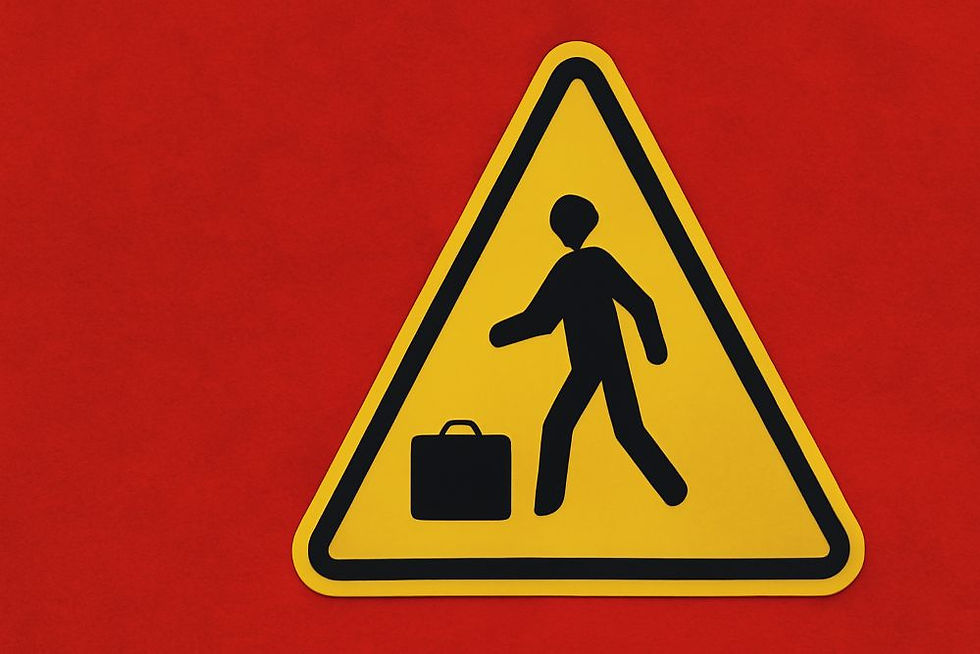Trump’s 2025 Tariffs to Hike Coffee, Electronics Prices
- Admin
- Jul 30
- 3 min read
Updated: Jul 31

As President Donald Trump prepares to impose new tariffs on dozens of trading partners starting August 1, 2025, American consumers face the prospect of higher prices on everyday goods. From coffee to electronics, these tariffs could increase costs for importers, which may trickle down to households and dampen consumption in the world’s largest economy. Economists warn that these measures could disrupt supply chains and inflate prices for a wide range of products. Here’s a detailed look at the products in the crosshairs and what it means for you.
Coffee, a cornerstone of American mornings, is heavily reliant on imports, with over 99% of the nation’s supply coming from abroad, according to the National Coffee Association. Two-thirds of US adults drink coffee daily, making it a critical consumer good. Major suppliers like Brazil, Colombia, and Vietnam face significant tariff hikes:
Brazil, which supplies over 30% of US coffee beans, is slated for a 50% tariff due to political tensions, including Trump’s claims of a judicial “witch hunt” against former Brazilian President Jair Bolsonaro.
Vietnam, despite a recent trade deal, faces an additional 20% tariff.
Colombia and other suppliers may also see increased costs, potentially driving up the price of your morning brew.
With coffee prices already sensitive to global supply chain issues, these tariffs could make your daily latte noticeably pricier.
Apparel imports, particularly shirts and sweaters, are also in the tariff crosshairs. The American Apparel & Footwear Association reports that China, Vietnam, and Bangladesh account for over half of US apparel imports from January to May 2025:
China, which supplies nearly a third of clothing imports, faces a new 30% duty, adding to existing tariffs. If a trade truce expiring August 12, 2025, isn’t extended, tariffs could climb even higher, forcing companies to either absorb costs or pass them on to consumers.
Vietnam (19% of apparel imports) and Bangladesh (11%) face potential duties of 35%, threatening affordable clothing options.
As retailers adjust to these costs, expect higher price tags on everything from T-shirts to winter jackets.
The US, the largest rice importer in the Western Hemisphere, brings in about 1.3 million tons annually, with aromatic varieties like jasmine and basmati dominating. Key suppliers face steep tariffs:
Thailand (jasmine rice) faces a 36% tariff.
India (basmati rice) is looking at a 26% tariff.
Pakistan (basmati rice) could see a 29% tariff.
These duties could increase the cost of rice-based dishes, impacting both households and restaurants. Smaller imports from South America and other Asian countries may also face higher costs, further squeezing budgets.
Cocoa imports, critical for chocolate and confectionery, are also under pressure. The US imports over $1.1 billion in cocoa beans annually, primarily from the Ivory Coast and Ecuador, with additional cocoa butter from Indonesia and Malaysia:
Ivory Coast faces a 21% tariff on cocoa beans.
Indonesia and Malaysia face 19% and 25% tariffs, respectively, on cocoa butter.
These tariffs could raise the cost of chocolate bars, baked goods, and other cocoa-based products, hitting consumers’ wallets during holidays and everyday indulgence.
Trump’s proposed 50% tariff on copper imports, effective August 1, 2025, could have far-reaching consequences. According to Boston Consulting Group (BCG), this tariff would add $8.6 billion to the cost of raw and refined copper imports. The ripple effect could be significant:
The construction industry, which uses 42% of domestic copper, will face higher material costs.
Electronics manufacturers, reliant on copper for wiring and components, could see increased production costs, potentially raising prices for smartphones, laptops, and other devices.
If tariffs extend to derivative products, the cost of everything from circuit boards to home appliances could climb.
President Trump’s tariff strategy aims to protect domestic industries and address geopolitical tensions, such as those with Brazil and China. However, economists warn that these measures could:
Increase business costs for importers, who often pass these expenses to consumers.
Dampen consumption, a key driver of the US economy.
Disrupt global supply chains, potentially leading to shortages or delays.
With tariffs set to take effect unless trade agreements are reached by Friday, the clock is ticking for both trading partners and American consumers.
As tariffs raise import costs, consumers may face:
Higher prices for everyday goods like coffee, clothing, rice, chocolate, and electronics.
Supply chain disruptions, potentially leading to shortages of popular products.
Economic ripple effects, as increased costs could reduce consumer spending and slow economic growth.
To prepare, consider stocking up on non-perishable goods like coffee and rice before prices rise, and keep an eye on retailers’ responses to tariff changes.
President Trump’s 2025 tariffs are poised to reshape the cost of everyday goods, from your morning coffee to your smartphone. While aimed at protecting US interests, these measures could hit consumers hardest, with higher prices and potential supply issues looming. Stay informed about trade developments and plan your budget accordingly to navigate these economic changes.









Comments